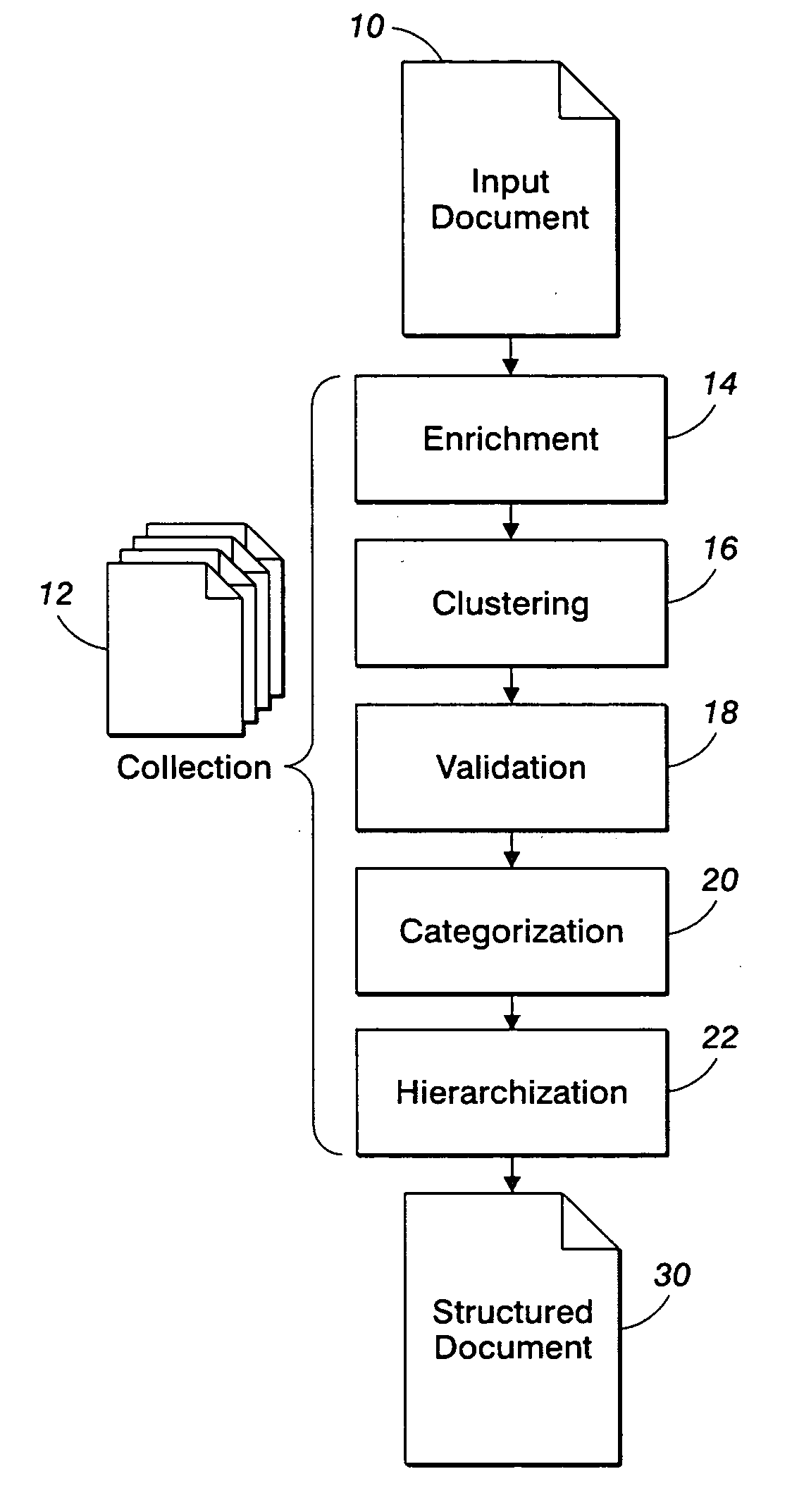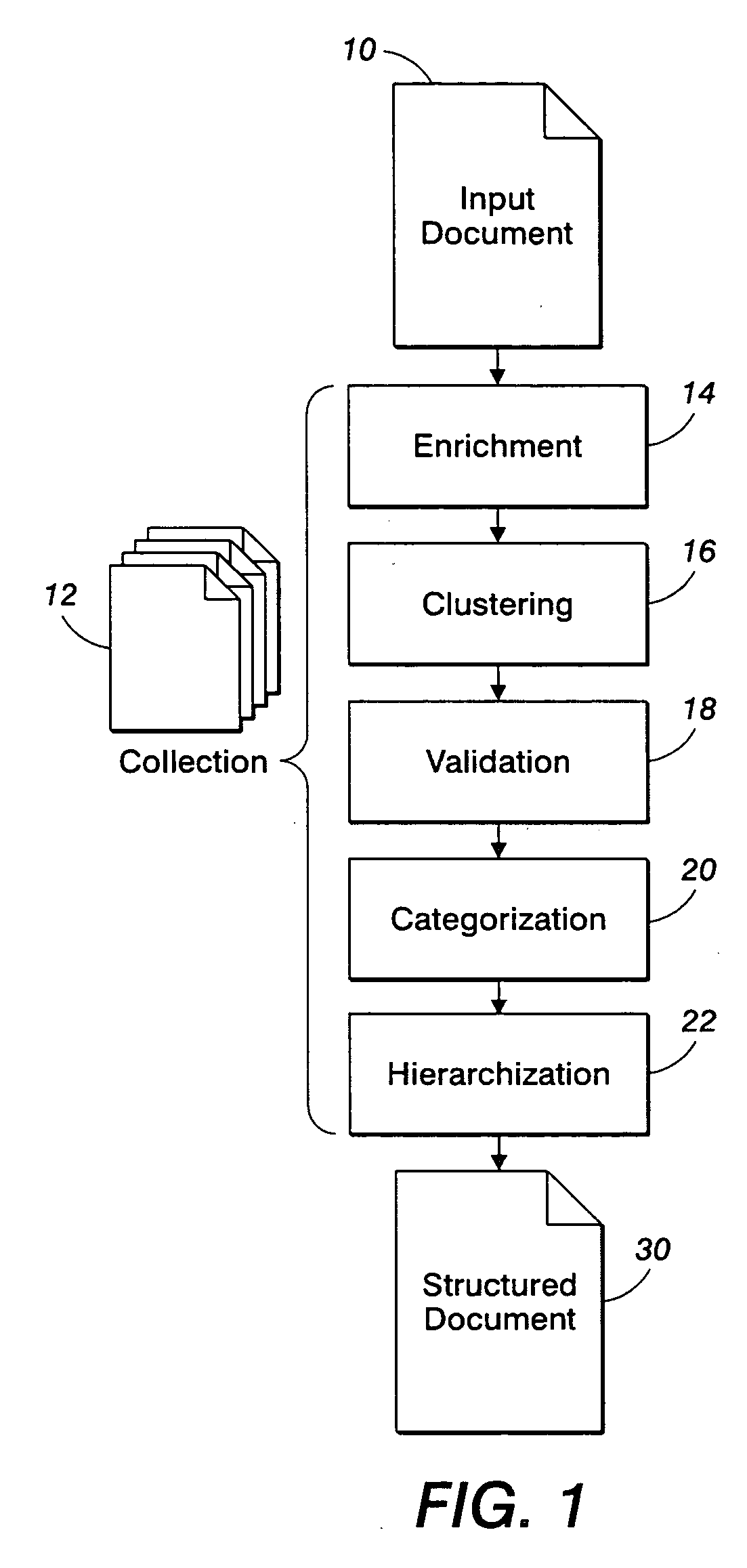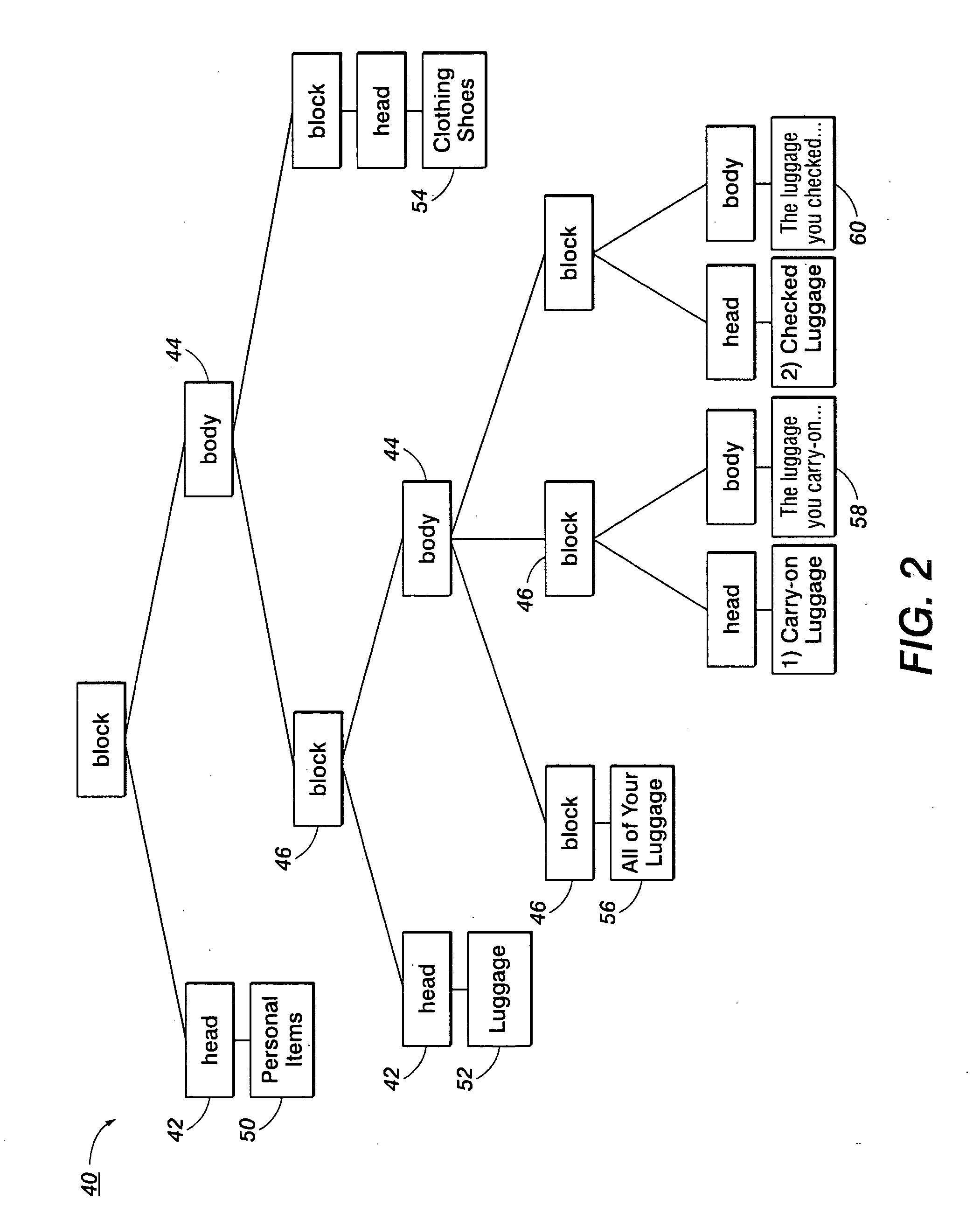Method and apparatus for structuring documents based on layout, content and collection
a technology of document structure and content, applied in the field of information storage and processing arts, can solve the problems of not very much help semantic search or automatic, and the structure of information is not rebuilt or preserved
- Summary
- Abstract
- Description
- Claims
- Application Information
AI Technical Summary
Benefits of technology
Problems solved by technology
Method used
Image
Examples
Embodiment Construction
[0019] With reference to FIG. 1, the initial structure of the input document 10 reflects the document layout (e.g., W3C XSL-FO, Extended Stylesheet Language, cf. www.w3.org / Style / XSL). The initial structure is an XML vocabulary for specifying formatting semantics, as is commonly known in the art. The desired converted logical structure of the structured document 30 will reflect a more abstract structure organized in accordance with the input document layout content and collection for enhanced ease of access and storage in a legacy document collection (e.g., an XML DTD).
[0020] A representation of the generic logical structure as intended for the structured document is as follows:
TABLE 1Block(Head?, Body, Tail?)>Head(#PCDATA | BLOCK)>Tail(#PCDATA | BLOCK)>Body(#PCDATA | BLOCK)>Head Level#IDREF>Tail Level#IDREF>Body Level#IDREF>
[0021] Use of such a logical structure for the document structure analysis provides advantageous access and use of a structured document 30 in a legacy colle...
PUM
 Login to View More
Login to View More Abstract
Description
Claims
Application Information
 Login to View More
Login to View More - R&D
- Intellectual Property
- Life Sciences
- Materials
- Tech Scout
- Unparalleled Data Quality
- Higher Quality Content
- 60% Fewer Hallucinations
Browse by: Latest US Patents, China's latest patents, Technical Efficacy Thesaurus, Application Domain, Technology Topic, Popular Technical Reports.
© 2025 PatSnap. All rights reserved.Legal|Privacy policy|Modern Slavery Act Transparency Statement|Sitemap|About US| Contact US: help@patsnap.com



